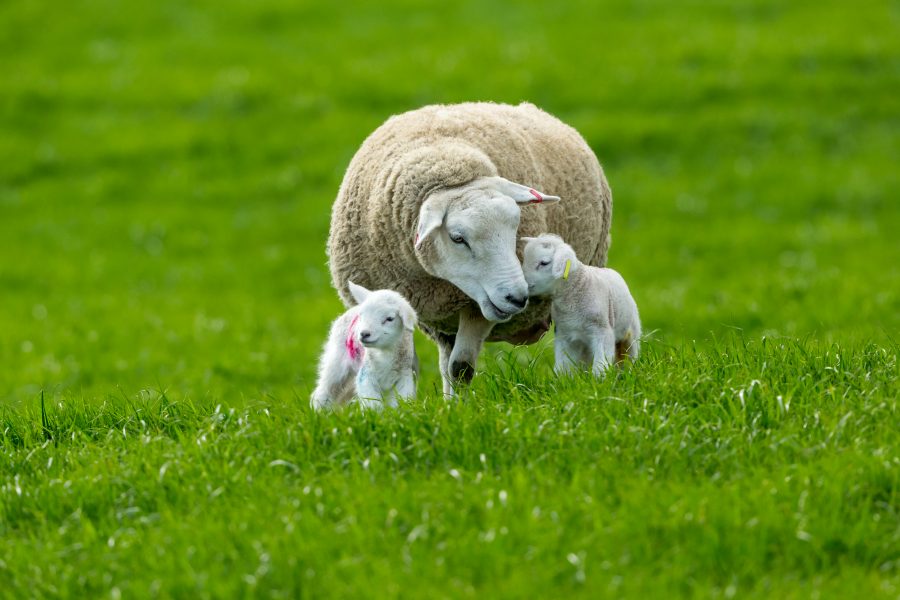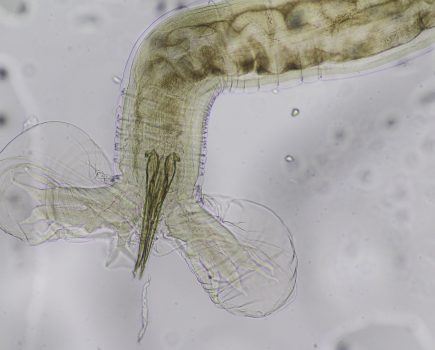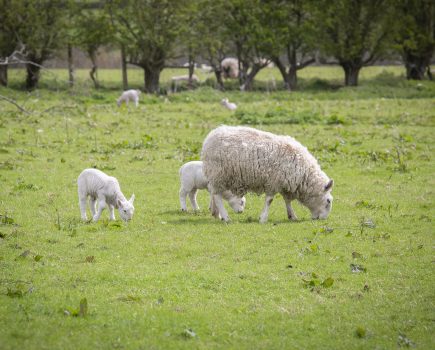To prevent lambing problems, we need to get more in touch with our ewes.
On the whole, antimicrobial use is decreasing in the farm animal sector, and the importance of this is well documented. Mostly this has been through the proactive work of livestock keepers alongside their vets in identifying alternative strategies, writes Ian Roper of Westpoint Farm Vets.
In some cases, hands have been tied, and discontinuation of certain products has been stipulated by assurance schemes, buyers or even by removal from the market as we saw with oral spectinomycin in 2022, although progress was already being made in reducing blanket preventative use.
In a group of more than 800 commercial sheep flocks, during the removal of oral spectinomycin, we have seen an increased reliance on injectable broad-spectrum antibiotics of 28%. Although injectable use is preferable to oral products in the sense of antimicrobial resistance development, we need to ensure that we are not simply substituting one antimicrobial product for another or waiting to be reactive when infections do develop.
There have been some success stories in reducing use. So, what have those sheep farmers been doing to ensure they don’t need to use antimicrobials virtually at all?
Inevitably, it involves planning ahead, but the good news is that it doesn’t have to be especially arduous or complicated. In infection control, we must always include the facet of environmental hygiene. That is rarely the whole answer, however, and certainly not if the other factors are not set right.
The key aspect is ewe nutrition, and the majority of sheep keepers have a good handle on what the right step-ups are in terms of hard feed kg/head in the final six weeks of lambing, when around 75% of foetal growth takes place.
This ranges from approximately 0.25 to
1Kg/head daily, depending on expected lambing date and litter size. Some also might split ewes into feeding groups based on body condition. It is right to try to avoid ewes being overly fat or thin at lambing, but if you can monitor and manage them before this phase you can mitigate a host of problems including dystocia, prolapses, metabolic disease, mastitis, parasitism, joint-ill and watery mouth.
Aside from diseases like Maedi-Visna and Johnes, the ewe’s immunity is dependent on energy balance and protein intake. This affects not only her own defences but her colostrum production. Over-conditioned ewes will also deposit fat internally within the omentum and mesentery in the abdomen.
This is slower to be mobilised than the external fat deposits, so an animal which goes from fat to lean may still have the same residual problems which a fat ewe does, in terms of abdominal space, intake capacity and ketone formation. A ewe which never gets fat in the first place is less susceptible to negative energy balance.
So, we need to avoid over condition and at least have them where we want them with six weeks to go. Many flocks may be stuck with certain pasture types or stocking density and be beholden to the weather, so investment in things such as electric fencing to limit access where necessary could pay dividends.
The first step to controlling antimicrobial requirements is to major on body condition scoring. There are good resources on this in the knowledge library at ahdb.org.uk, and it is also something your vet can help you with.
A lowland ewe should score three out of five at lambing, and also at six weeks to go. Scoring, therefore, might need to take place in mid pregnancy, and scanning may also be a good opportunity to record. We need to make sure we are not restricting feed excessively in the 35 days after tupping, as this could compromise embryo implantation and pregnancy rates.
It is also worth analysing your forage, including fresh grass, so you can understand protein content as well as energy and trace elements, for example with www.kingshay.com Energy and protein are vital for colostrum as well as for foetal growth, and this analysis will help determine just how much they need. Lamb birthweight also then directs daily liveweight gain and weaning weight potential.
It is also possible to assess the impact of what you are providing through metabolic profiling of the ewes ahead of lambing. Urea, albumin and BHBs allow us to assess macronutrient needs. Ewes that are due to lamb in the first week should be tested three to four weeks before lambing to allow for any changes to diet to be instigated well in advance of lambing.
Six ewes from each management group should be tested to give a realistic picture of nutrition of the whole flock (singles, twins, triplets, gimmers). Ewes should not have been fed concentrates less than four hours before blood sampling.
We should then be assessing the colostrum that the lambs are getting, and this can be done cheaply and accurately with a Brix refractometer, with a target Brix reading of greater than 22%.
Lambs should receive 50ml/kg within two hours of birth and 200ml/kg within the first 24 hours (so, feed until the belly is full). Bottles with teats or stomach tubes can be used to ensure the lambs get what they need.
The best supplementary colostrum is that which is collected from ewes in the same flock, for instance using a Udderly EZ ewe milker. Remember, when reheating colostrum from the fridge (for up to 24hrs) or freezer (for up to one year), don’t use the microwave or heat beyond 45 degrees Celsius, as this will damage the core components of the colostrum.







